Is your roof calling for help? Concrete roofs are built to endure the elements, but when sneaky water leaks creep in, they can turn your fortress into a soggy mess. Don’t let those stubborn leaks steal your peace!
In this guide, we’ll dive into foolproof ways to seal your roof, protect your home, and stop water from raining on your parade, literally.
9 Actionable Tips to Stop Water Leakage from Concrete Roofs
A leaking roof is an inconvenience and a mood spoiler. The constant drip-drip can leave you stressed, not to mention the damage it can cause to your space. But fret not. With a little effort and the right approach, you can fix this with your own hands.
Waterproofing Your Roof
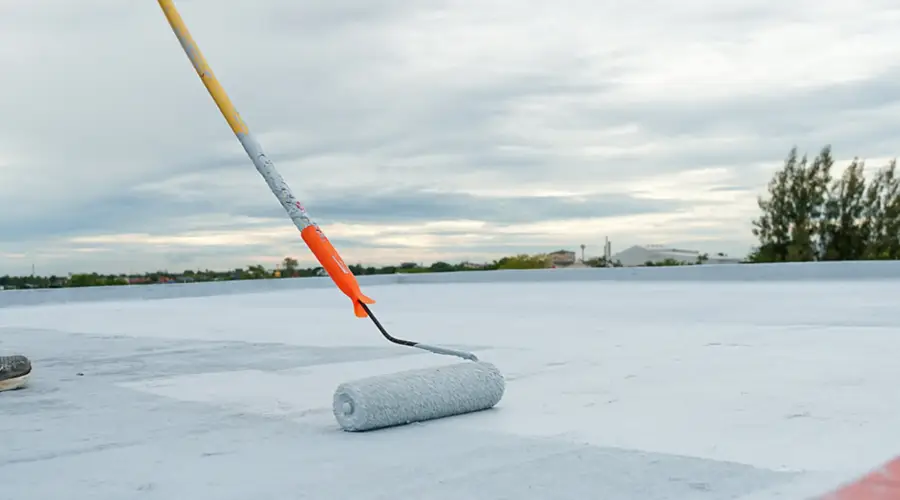
It is an absolute safeguard against leaks and moisture damage, especially in humid or tropical climates. For both flat roofs and slanted roofs, the process is the same. When it comes to a flat roof, a slight slope is introduced to direct water flow toward drainage pipes, followed by a three-layer waterproofing process.
In the first coat, a slurry mix of polymer-based compounds and cement in a 1:1.25 ratio provides a strong base. After that, two subsequent layers mixed in a ratio of 1:1.5 are applied at 24-hour intervals. The surface should be left to cure for 48 hours, under wet gunny sacks to ensure durability.
In existing homes with leaks, old waterproofing layers must be removed, the surface thoroughly cleaned, and the same multi-coat process reapplied.
These precise ratios and techniques ensure a long-lasting, leak-free roof that stands firm against rain and moisture.
Periodic Maintenance
Even the best waterproofing will not last without proper maintenance.
- Regular roof inspections
- Prompt action to address cracks, pooling water, or signs of wear in the waterproof layers is crucial.
- Remove debris like leaves and dirt, as they can block drainage systems and trap moisture.
- Pay attention to the condition of the waterproof coatings.
- Reapplying protective layers every 5 to 7 years.
These steps must be followed when it comes to maintaining the roof to avoid dealing with dry mats, empty buckets, and much more.
Seal the Roof Joints Effectively
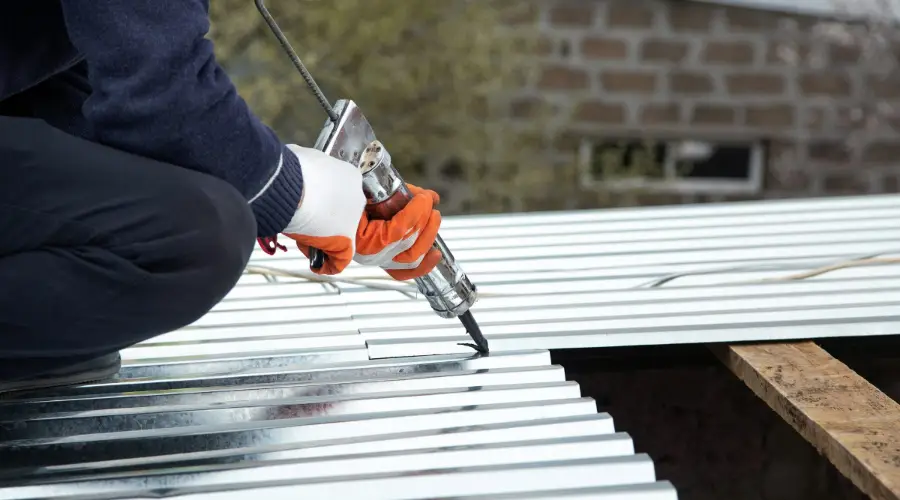
- Start cleaning the joints of roof to remove dust, debris, and any existing weak material.
- To fill the gaps, use a high-quality sealant like polyurethane or silicone which can expand and contract with temperature changes.
- Apply a layer of waterproof tape or membrane over the sealed joints to reinforce the area.
- Schedule your time to inspect these joints quarter over quarter(Q-O-Q), especially before the rainy season, to ensure the seal remains intact.
By giving extra attention to roof joints, you can prevent leaks and extend the lifespan of your roof.
Pick Quality Roofing Materials
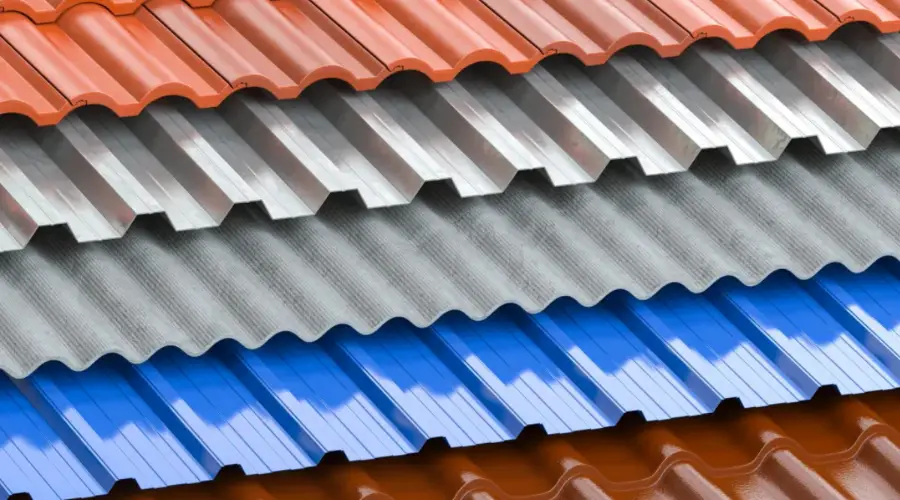
This has been done while laying the roof, but that doesn’t mean that you should not do at least this now. For concrete roofs, prefer materials like polymer-based waterproofing compounds and quality cement to withstand moisture and temperature fluctuations.
In addition, if your roof has Shingles or tiles, ensure they are made from water-resistant materials such as asphalt or clay, with proper underlayment to seal gaps.
Always source materials from trusted brands and follow recommended application methods to prevent weak spots that could lead to leaks.
Use High-Quality Roof Vents
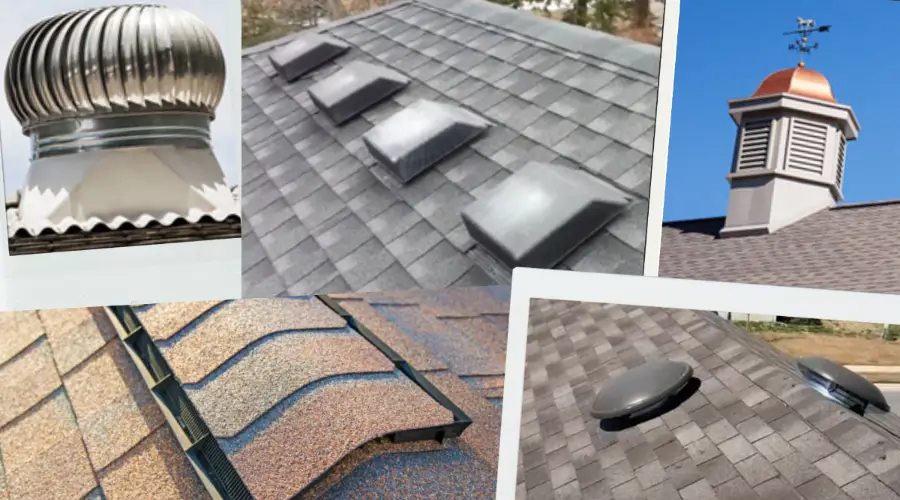
This won’t be applied for all types of houses. But if your home does have frequent outpouring, you can consider this too.
Placing high-quality roof vents allows air to circulate within the attic space, reducing moisture buildup. Failing to do so can lead to mold, mildew, and eventual water damage. In general, roof vents help regulate the temperature, preventing the formation of condensation that can weaken your roof over time by allowing warm air to escape and cooler air to enter.
Be conscious in choosing durable, weather-resistant vents that are designed for your roof type, whether it’s flat, sloped, or vaulted. This will reduce the risk of ice dam formation, and extend the life of your roof.
Ensure the Correct Installation of Tiles
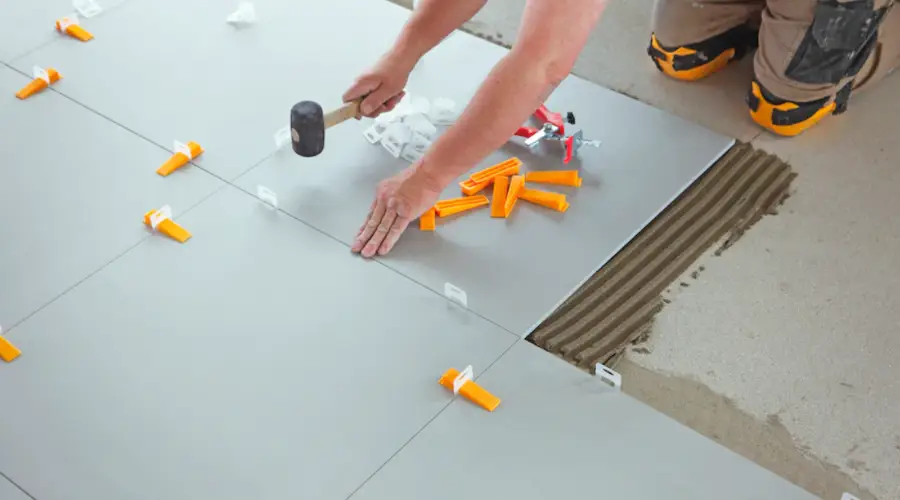
When it comes to choosing tiles, begin with tiles that suits your climate, such as clay or concrete for durability or metal for resistance to harsh weather. Tiles should be laid in an overlapping pattern, starting from the roof’s base and working upwards, to allow water to flow downward without seeping beneath.
Alignment gaps or misplacement can cause water infiltration. Therefore, it is better to keep an eye on edges and joints that must be sealed with waterproof materials like flashing or sealants to prevent leaks at vulnerable points.
Adopt Reliable Construction Practices
During construction, high-quality materials, such as polymer-cement mixtures in appropriate ratios, should be used for waterproofing layers. If it is a flat roof, start with a well-designed slope that ensures effective water drainage, minimising the risk of pooling.
For proper curing, 48 hours is recommended for waterproof coatings to help them last for years.
Prompt Removal of Stagnant Water
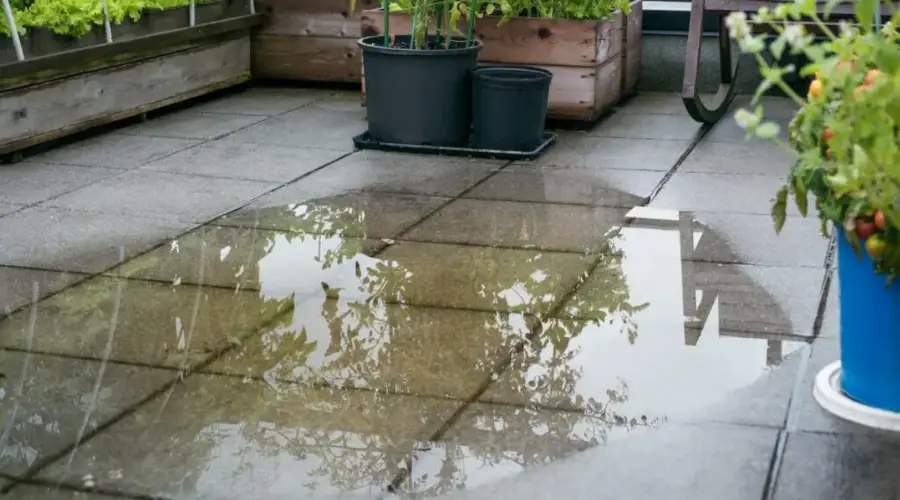
This is most common in houses where there is no proper roof plan. If the roof surface is not equal in any case, water might stand on the roof, which exerts pressure on the surface. This leads to cracks, seepage, and the growth of mould and mildew. It also increases the wear and tear of waterproofing layers. To address this, ensure that drainage systems are clear of debris and functioning effectively.
It’s better to have a practice of inspecting roofs after heavy rains, which can help identify areas where water tends to accumulate. Maintaining a slight slope toward drainage outlets for flat roofs can prevent pooling.
Prioritise Regular Maintenance
This is something basic that you should not overlook!
- Inspect the roof periodically for cracks, weakened areas, or debris buildup, as these can lead to water pooling and seepage.
- Especially during rainy seasons, clear drains and gutters to ensure proper water flow.
- Look for signs of wear on waterproofing layers and reapply protective coatings if necessary.
What are the Causes of Roof Leakage?
For areas with tropical monsoons like India, roof leakage can stem from a variety of causes. As discussed above, it often starts with poor construction practices or the use of substandard materials.
Over time, weathering and exposure to harsh elements like heavy rain, extreme heat, or snow can weaken the roof’s surface, leading to cracks and water seepage and leakage
Also, poor drainage systems, such as clogged gutters or insufficient slope in flat roofs, exacerbate the issue by allowing water to pool.
In some cases, structural issues, such as roof movement due to settling or improper sealing around vents and chimneys, also create weak points for water to penetrate.
Taking a timely look at these causes is essential to addressing the root of the problem and implementing effective solutions.
Conclusion
Stopping water leakage is like a walk in a park but not all the time. Before it causes inconvenience to the people around you, you need to take a proactive approach and careful attention to detail.
You can protect your roof from further damage by identifying the source of leaks, thoroughly cleaning the surface, and applying durable waterproofing solutions, which you’ve seen in this article.
Whether building a new home or repairing an existing roof, investing in the right waterproofing techniques will safeguard your space from leaks, providing peace of mind and preserving the soundness of your home.

